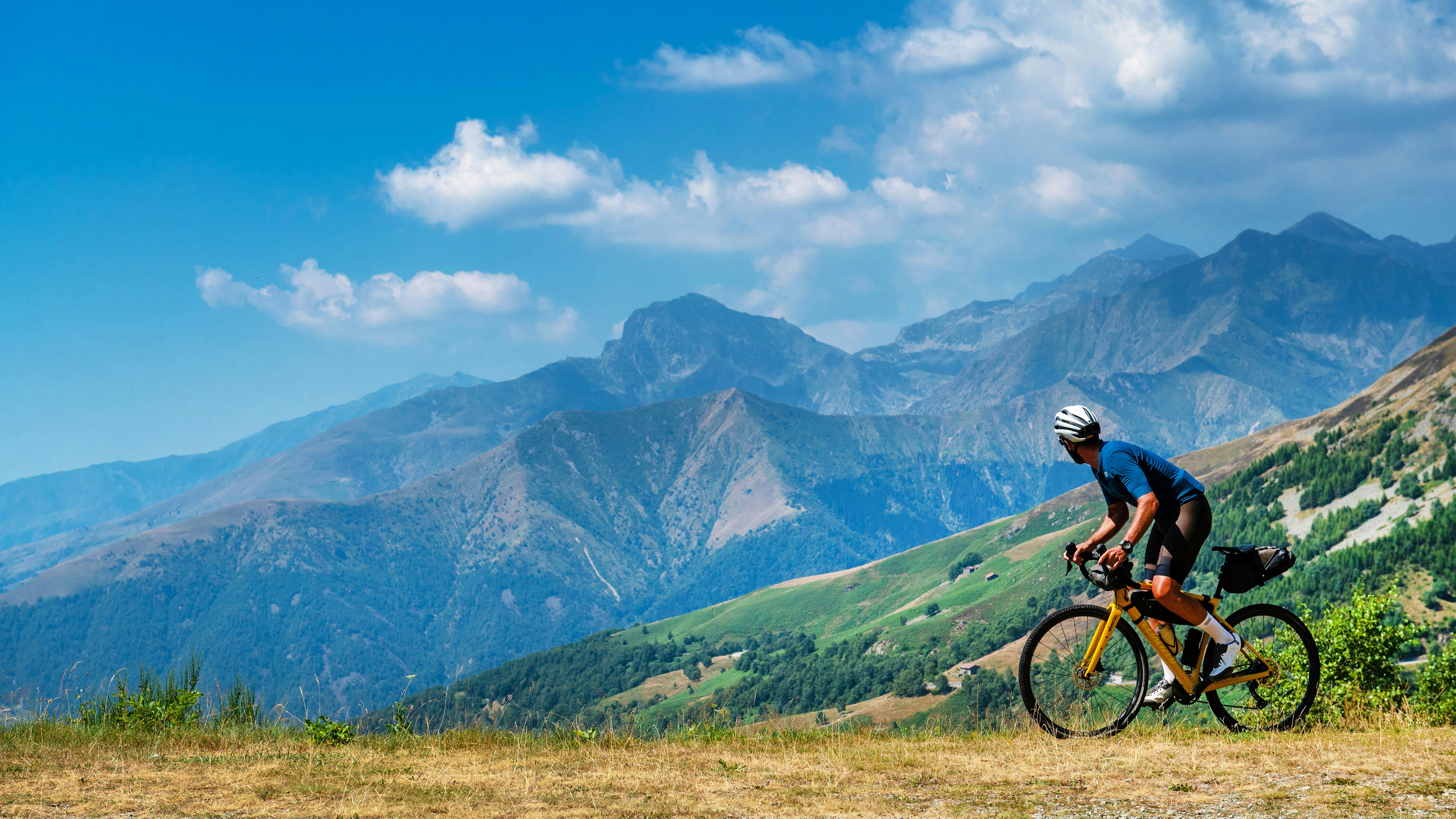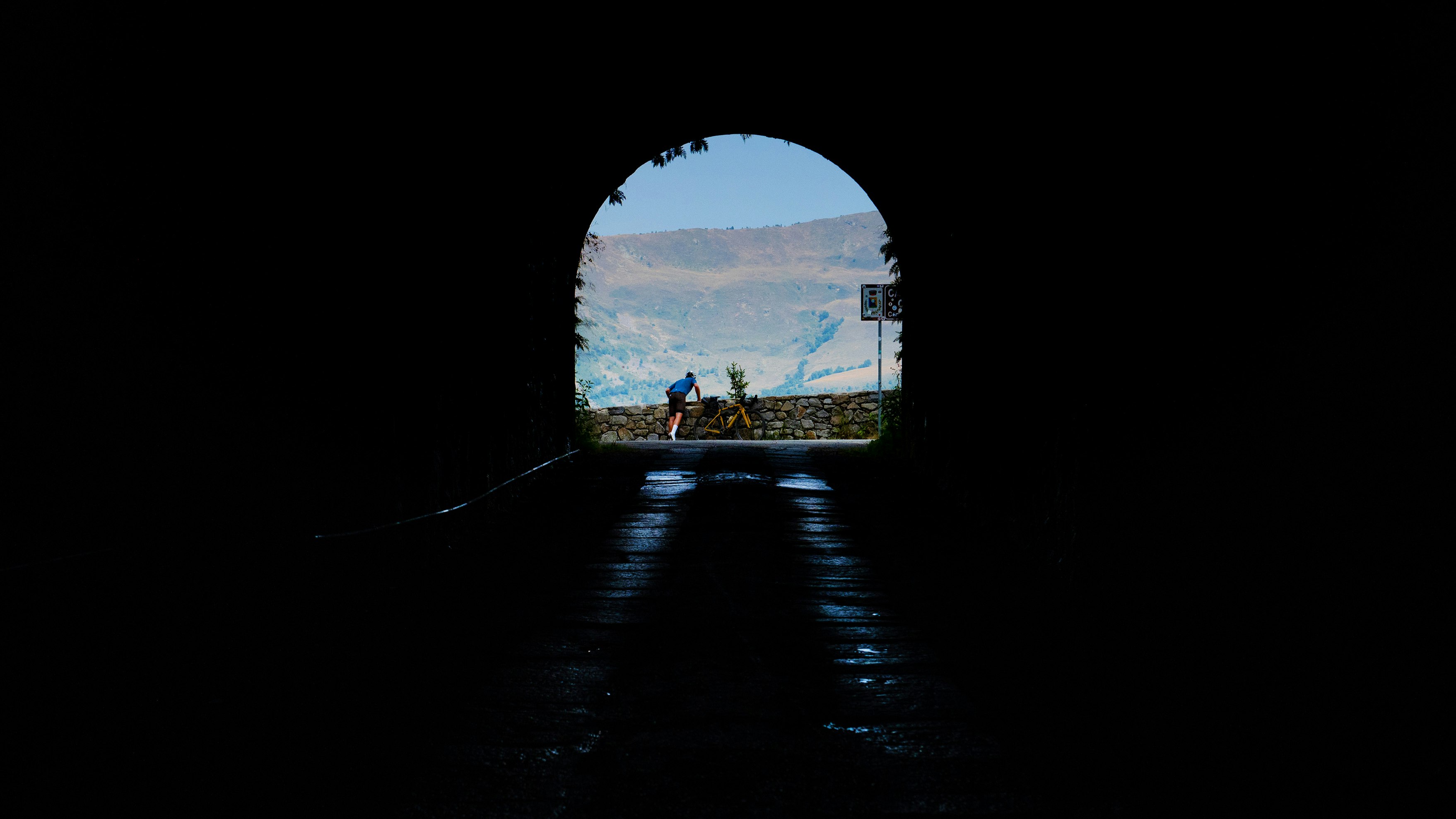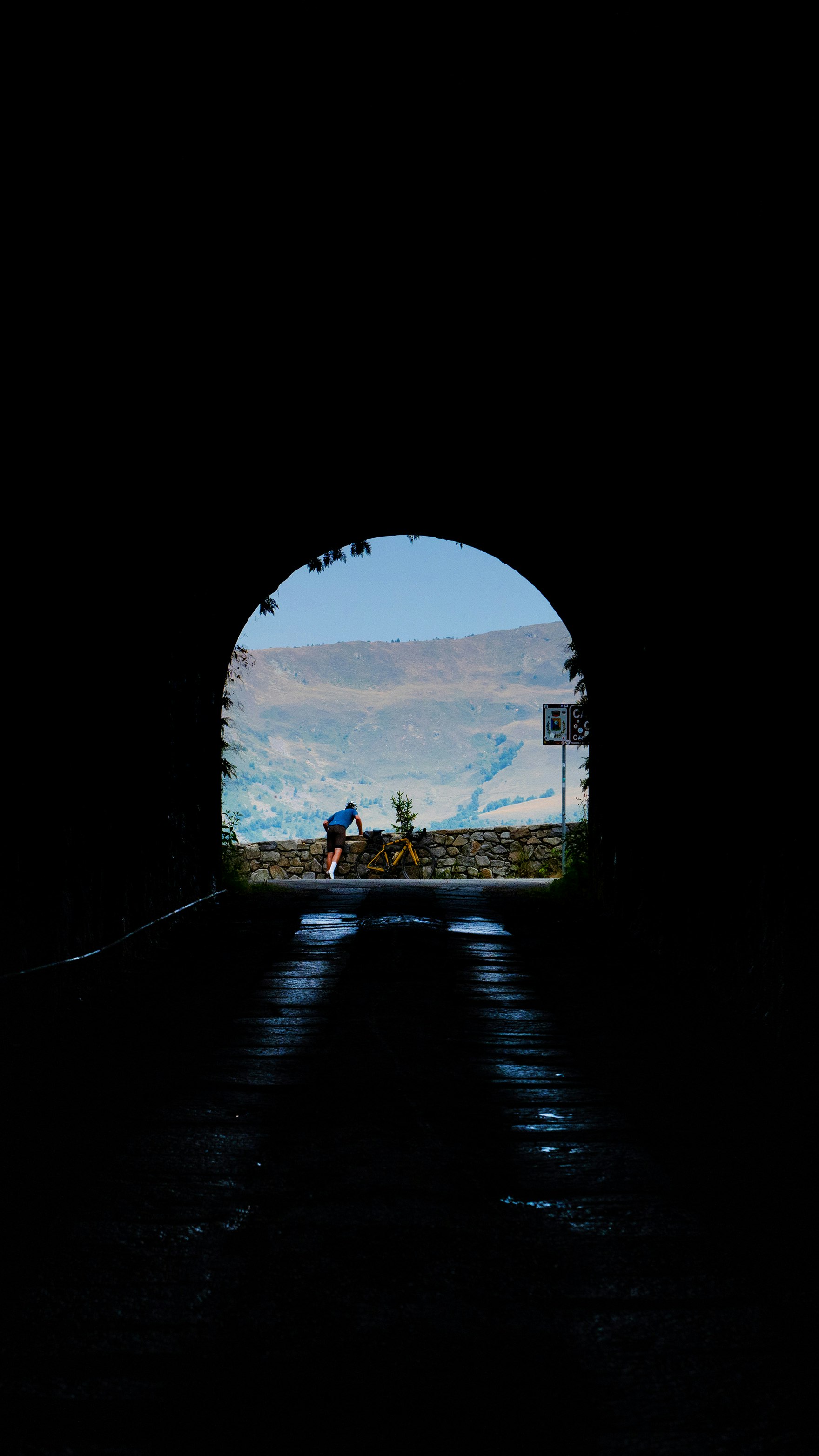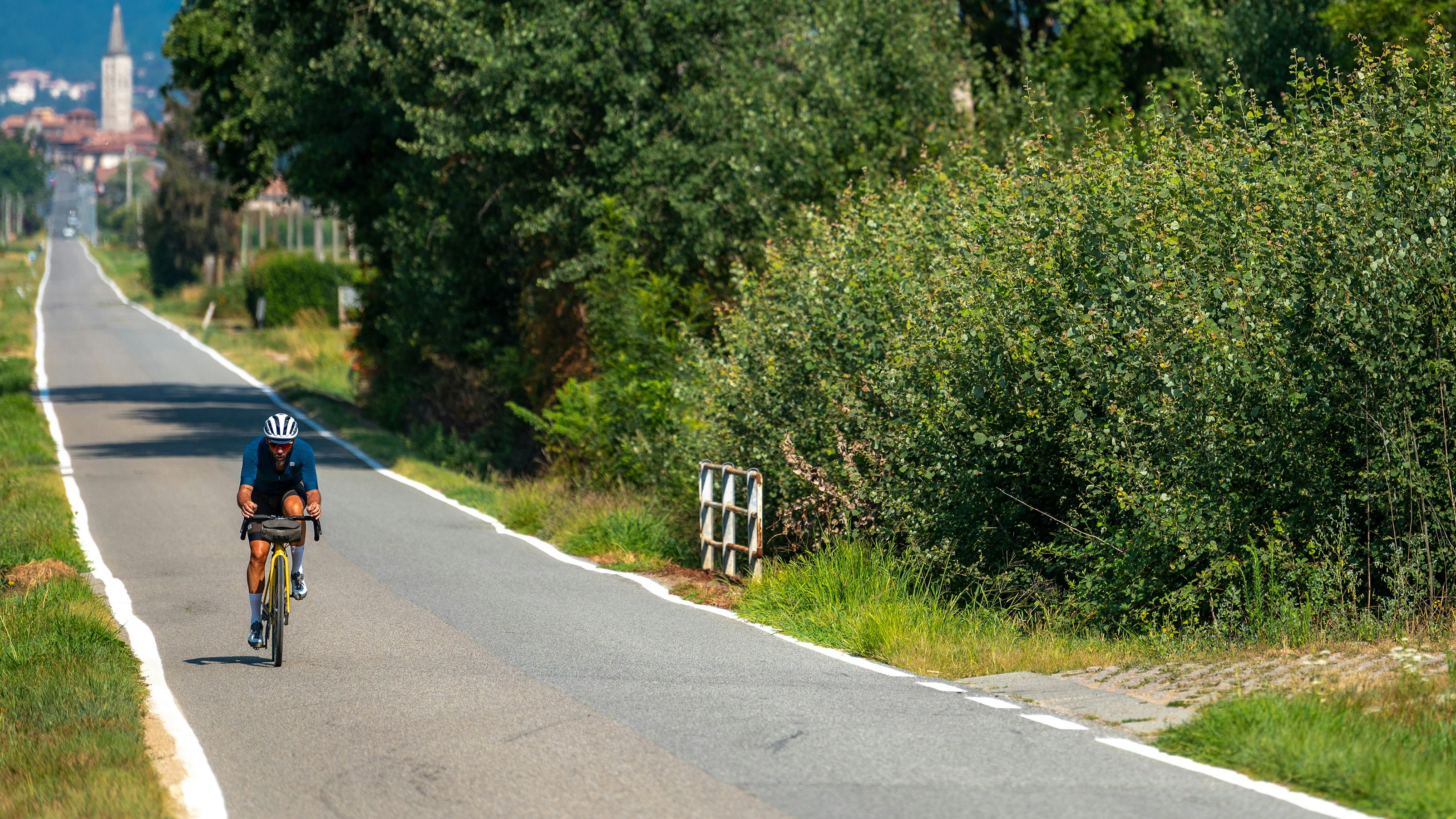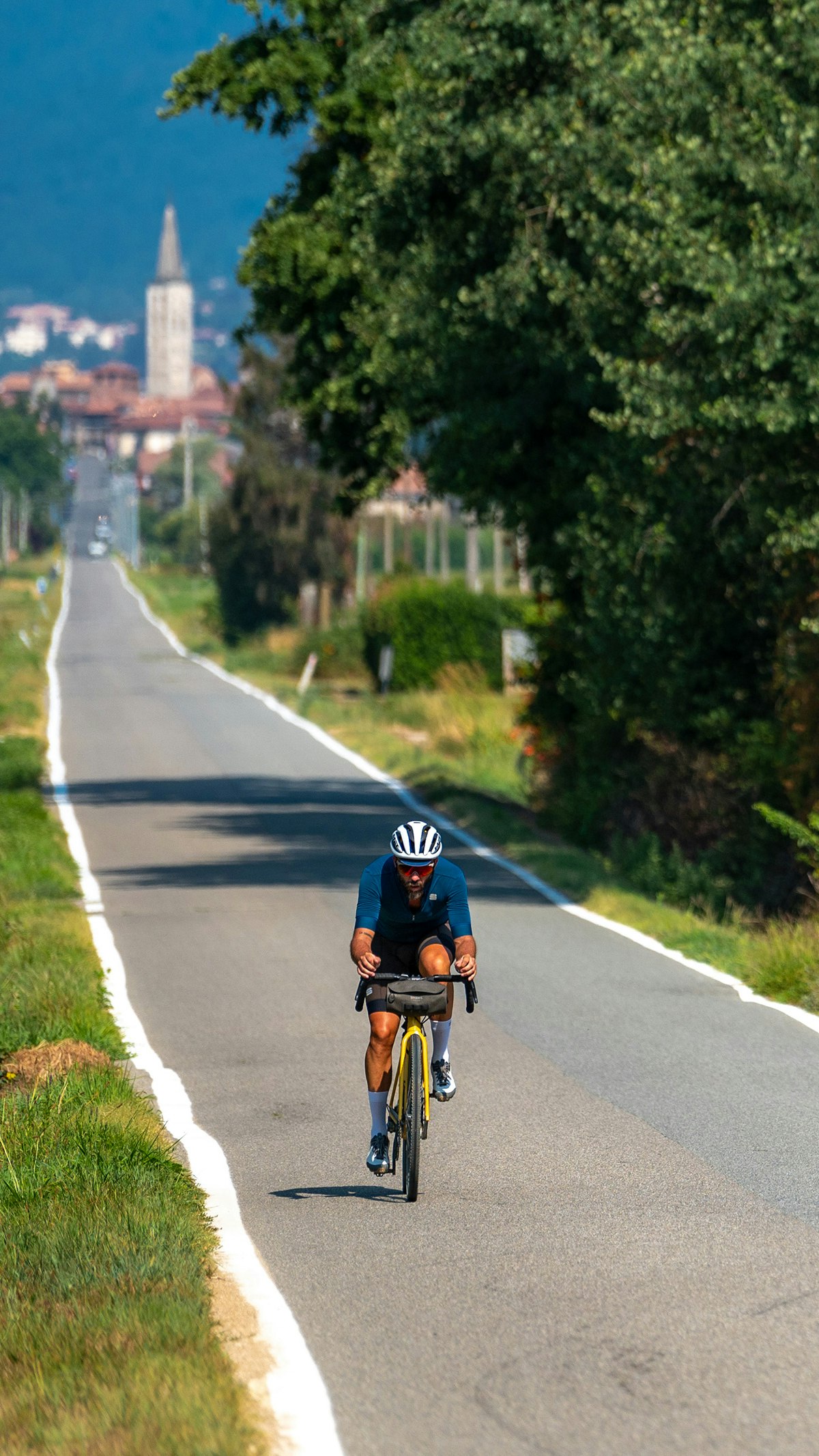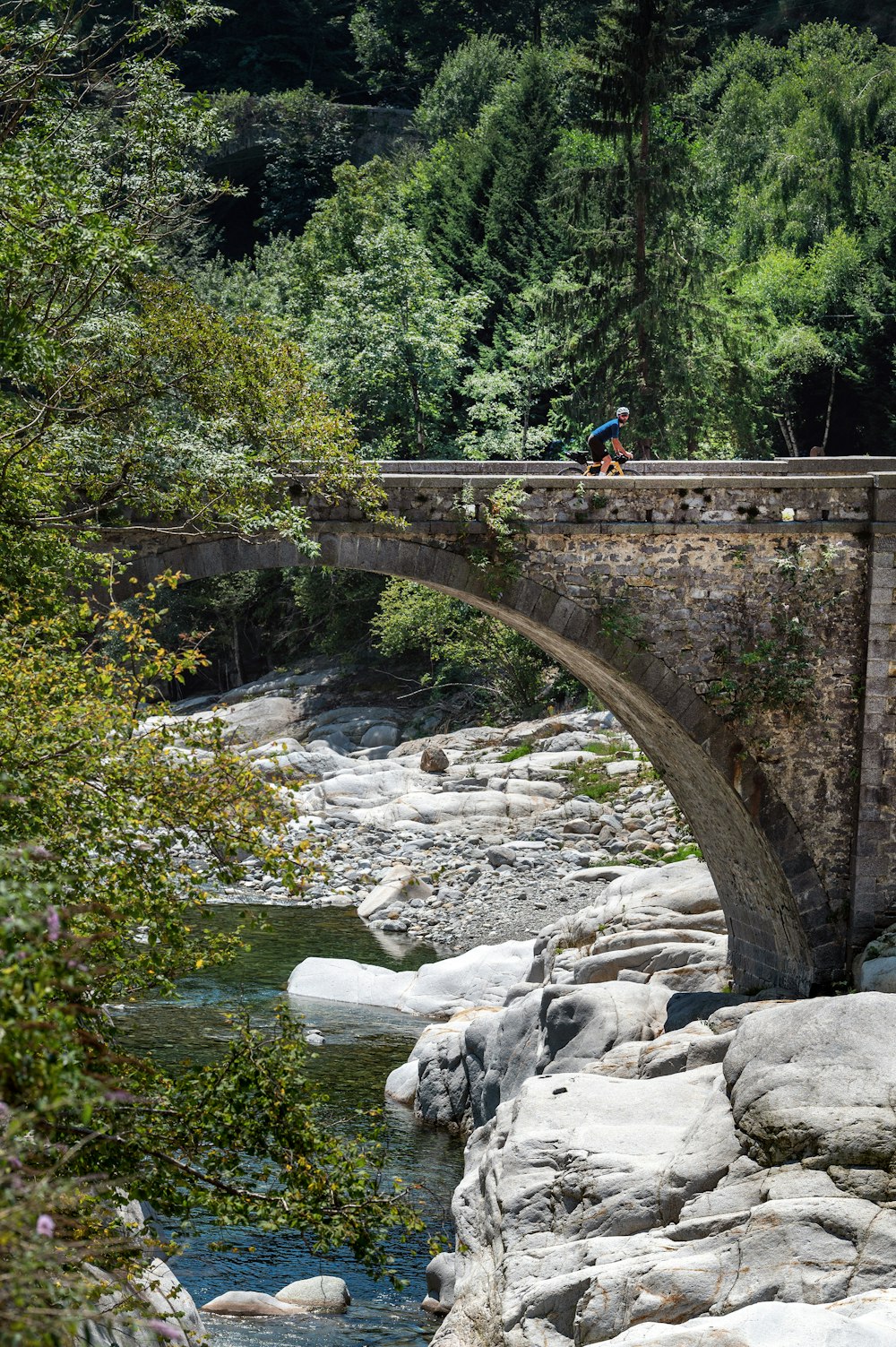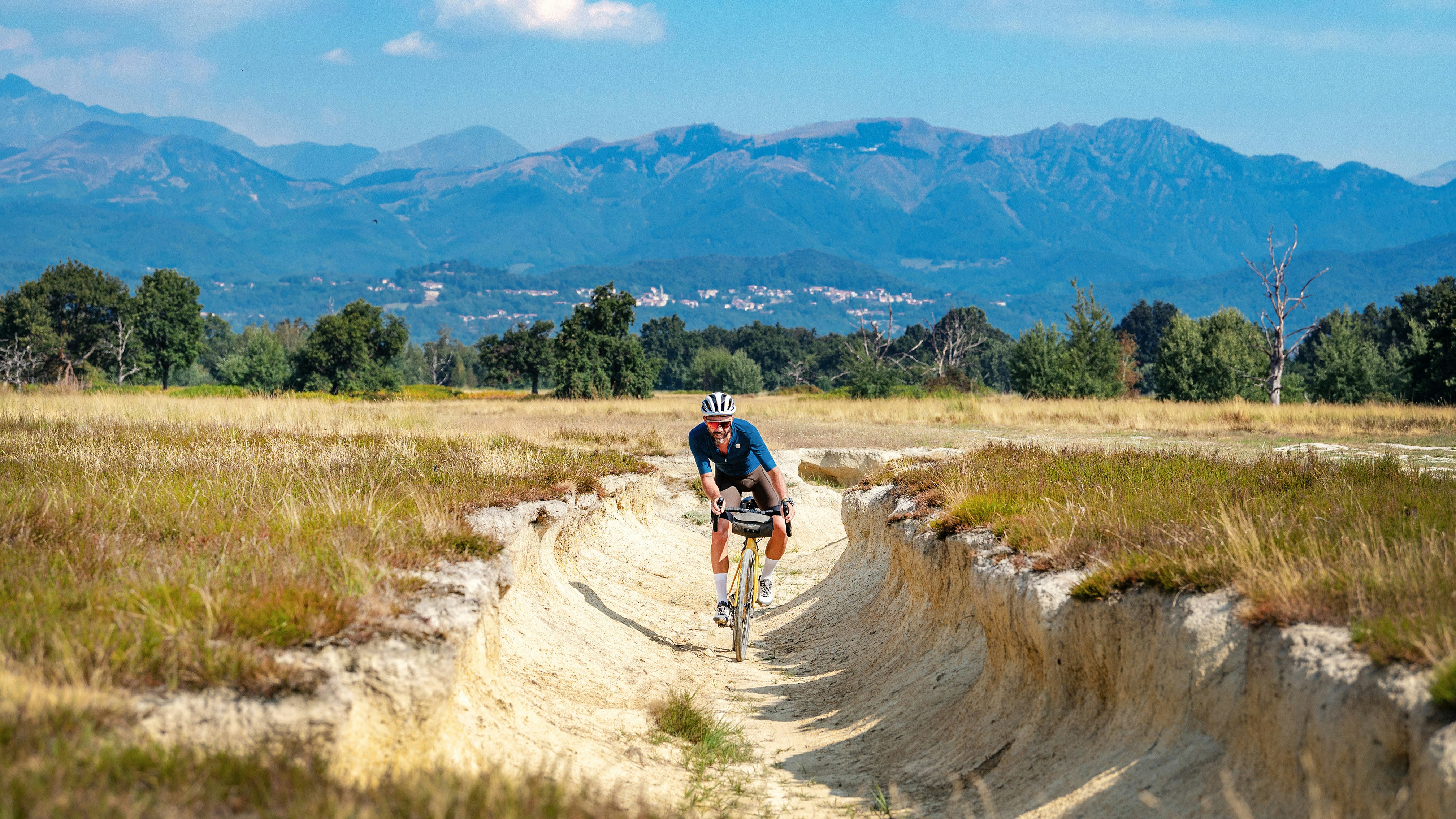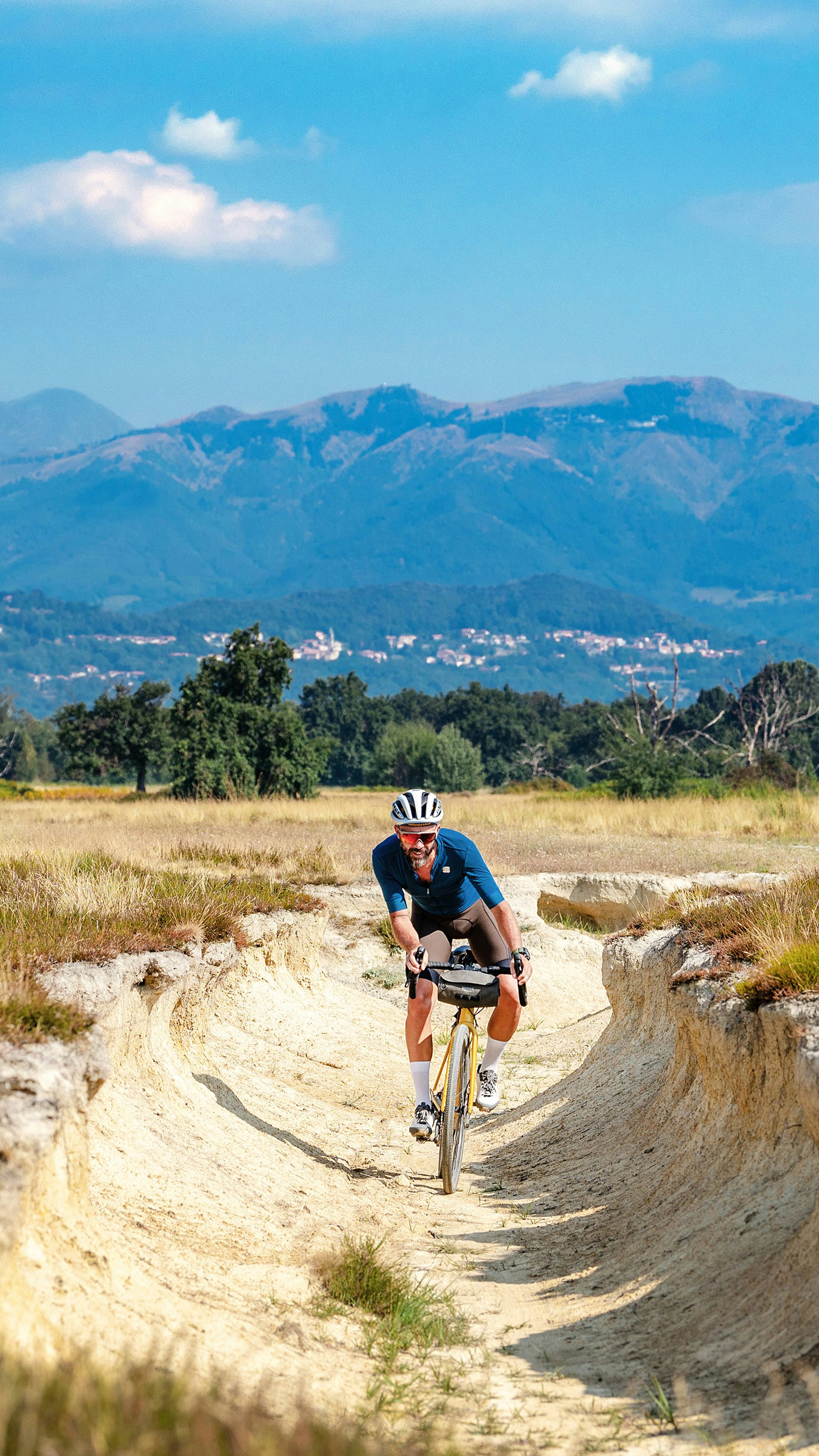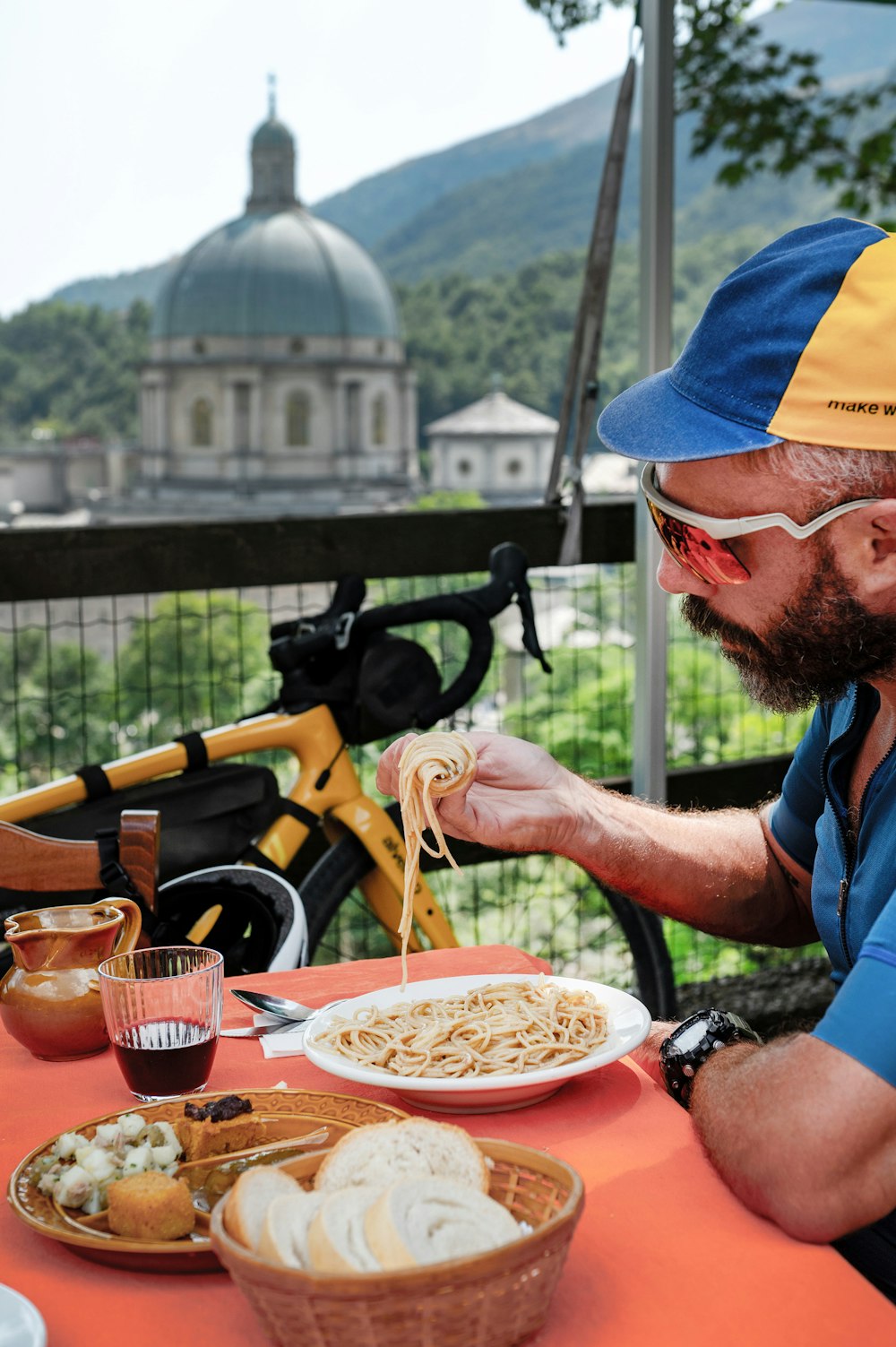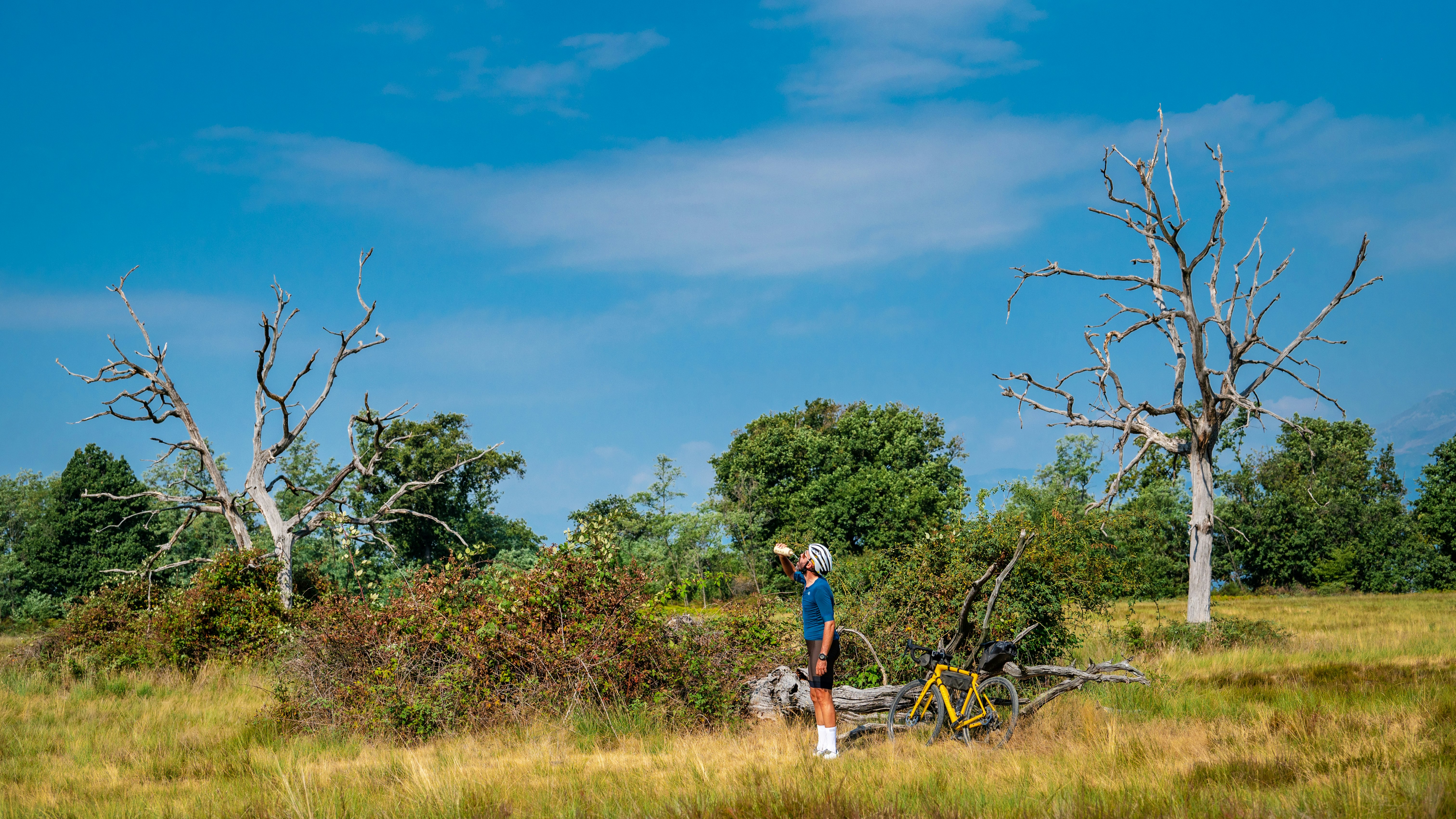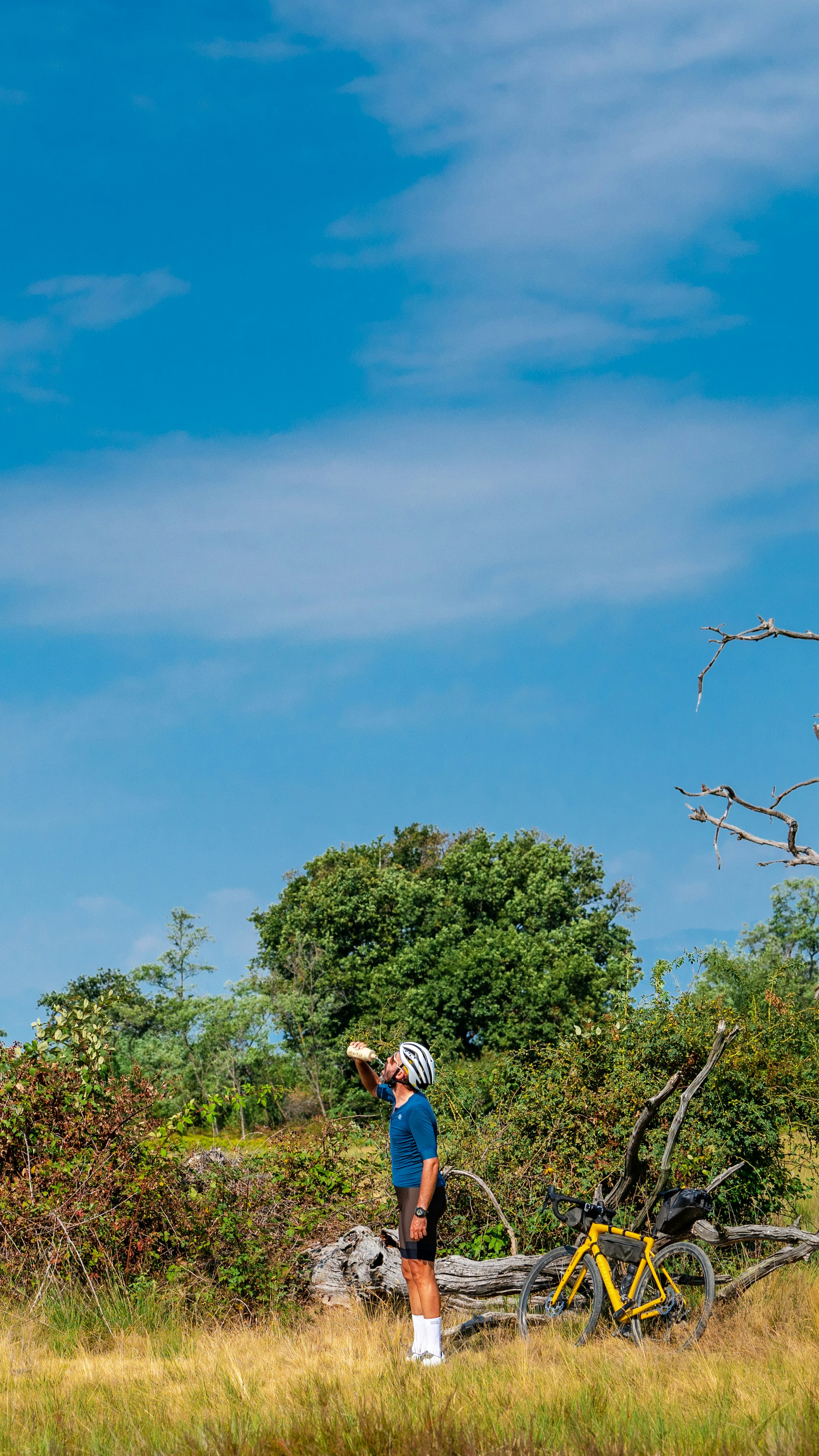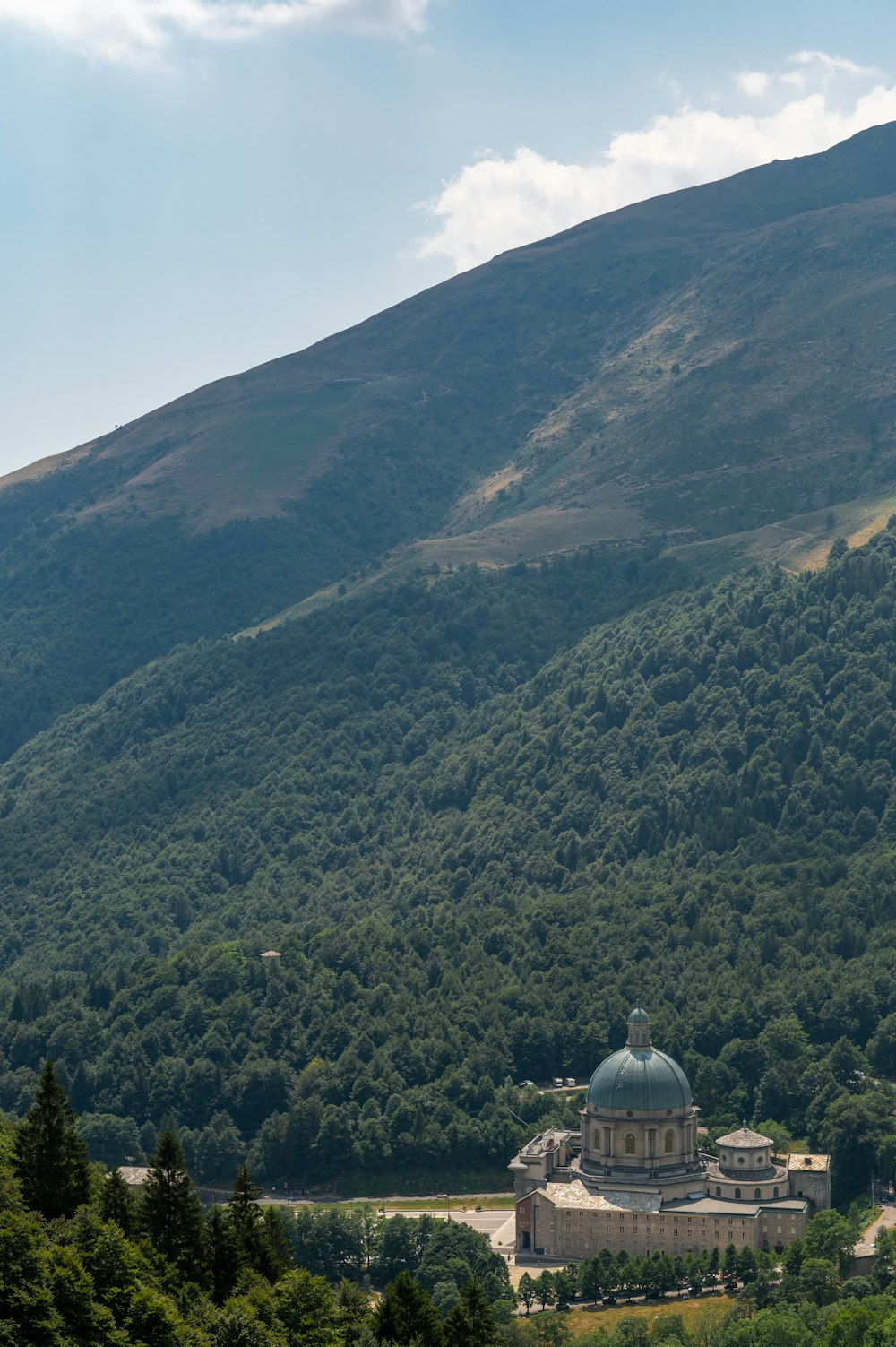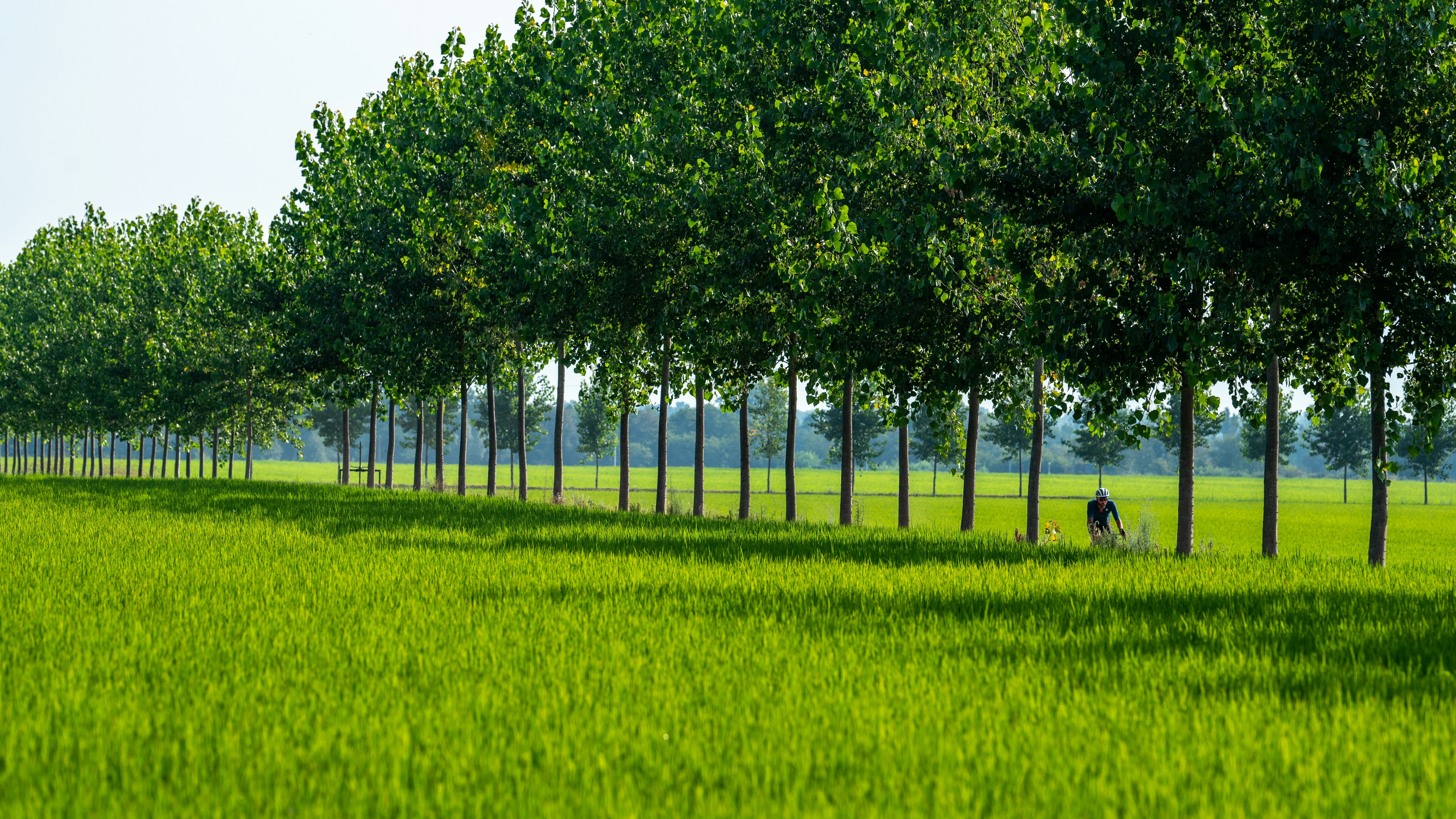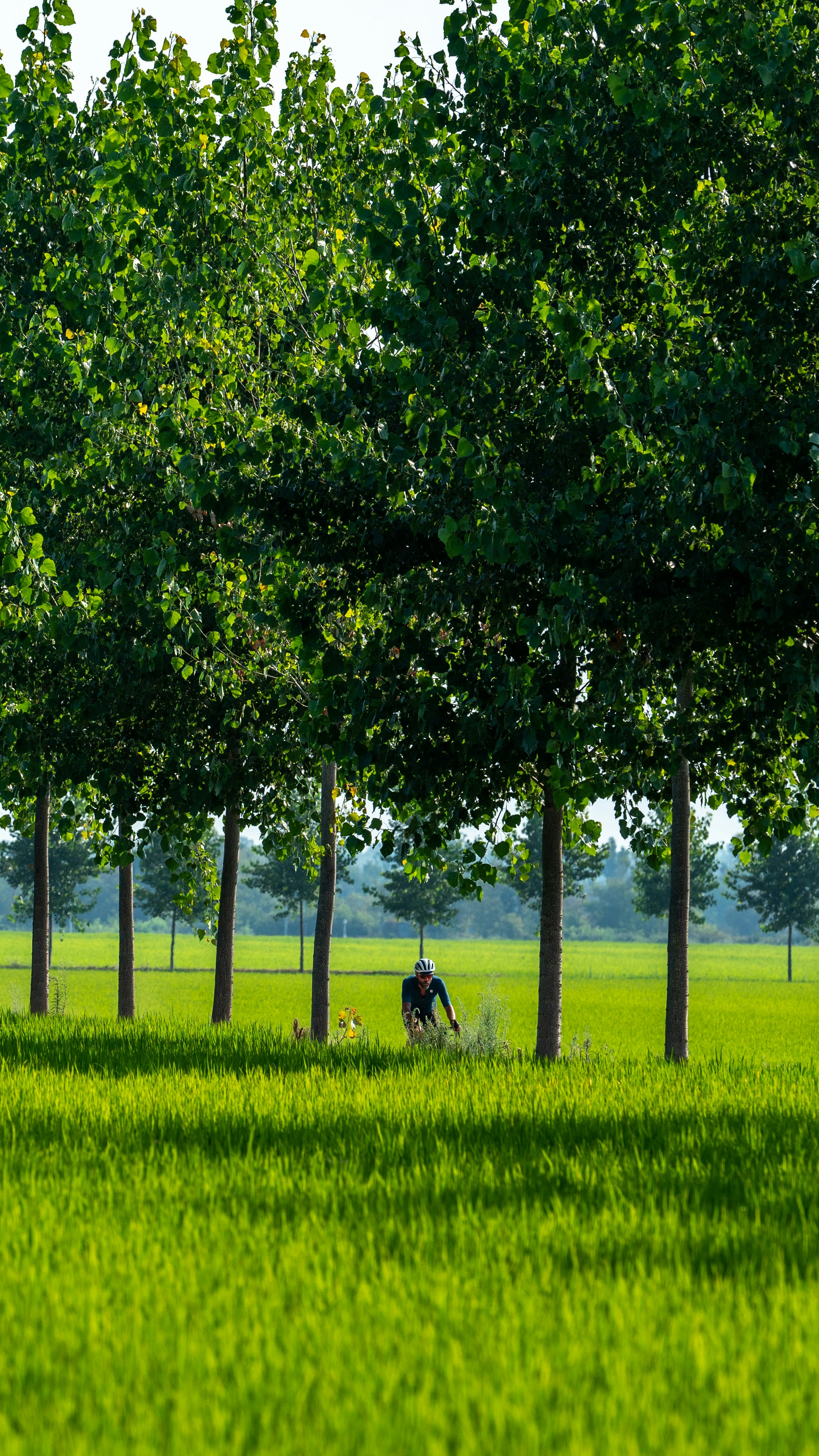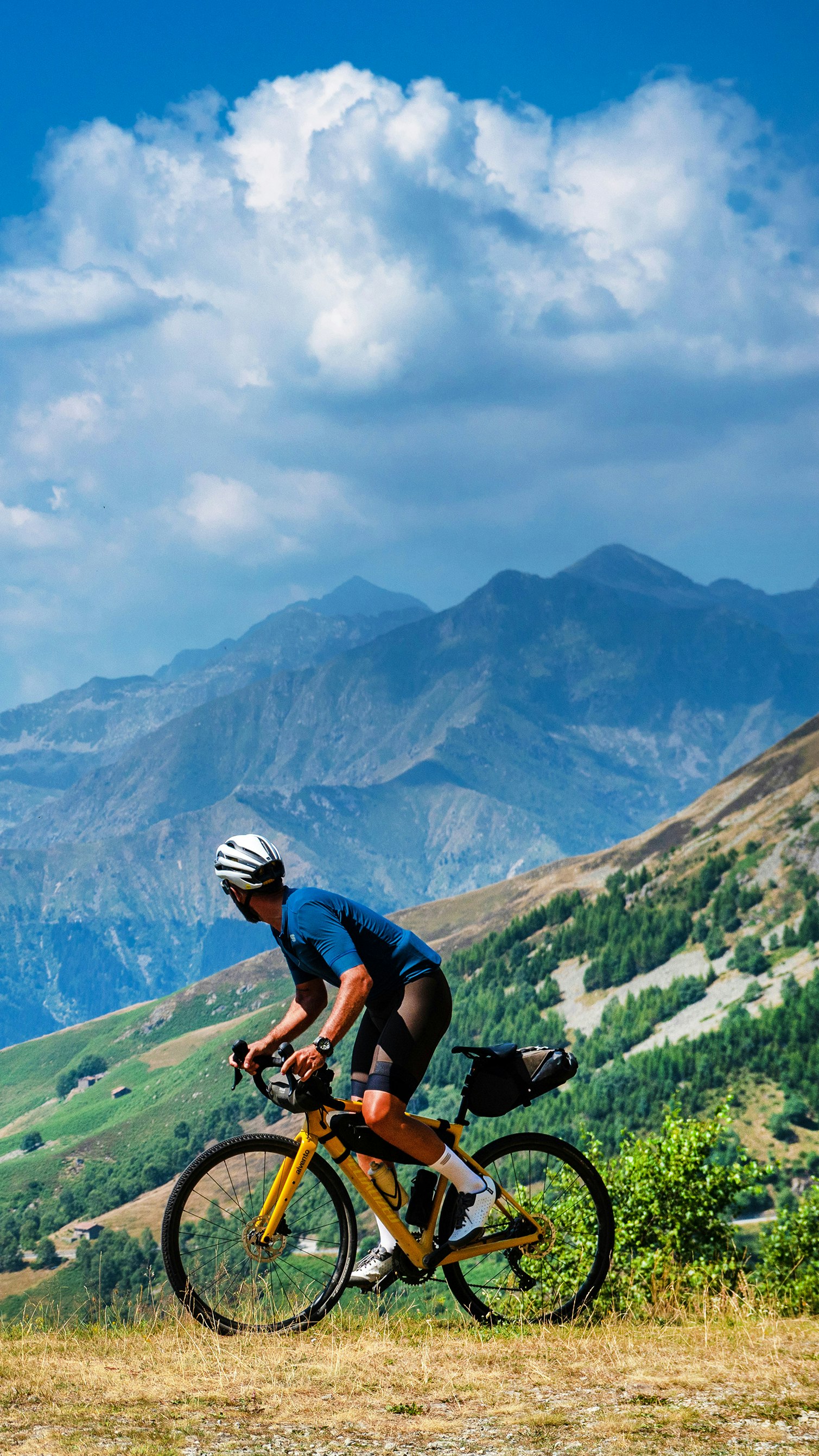
The balcony of the Alps
The heart of the Central Park between Turin and Milan. An area that inspires awe with its varied landscape and historical significance.
Elevation difference
3518 m
Total Length
196 km
Duration
2/3 Days
I
The balcony of the Alps
00
Intro
01
Between Biella and Rosazza, along the Cervo river
02
The Zegna Panoramic Road
03
The wine landscape between Masserano, Lessona and Castellengo
04
The Baraggia between Castellengo and Masazza
05
The rice fields between Masazza and Salussola
06
The Bessa hills and the Serra moraine cordon
07
The Zegna Panoramic Road between Andrate and Oropa
08
The descent towards Biella through the Burcina Park
These are the peaks that form the backdrop to the Biellese, appearing between two mountains which share a common name - Mombarone. In Piedmontese, “baron” means heap. Thus, to the west above Ivrea is the Mombarone di Andrate, to the east, that of Coggiola at the entrance to Valsesia. In between; valleys, hills, scenic roads, villages and forests.
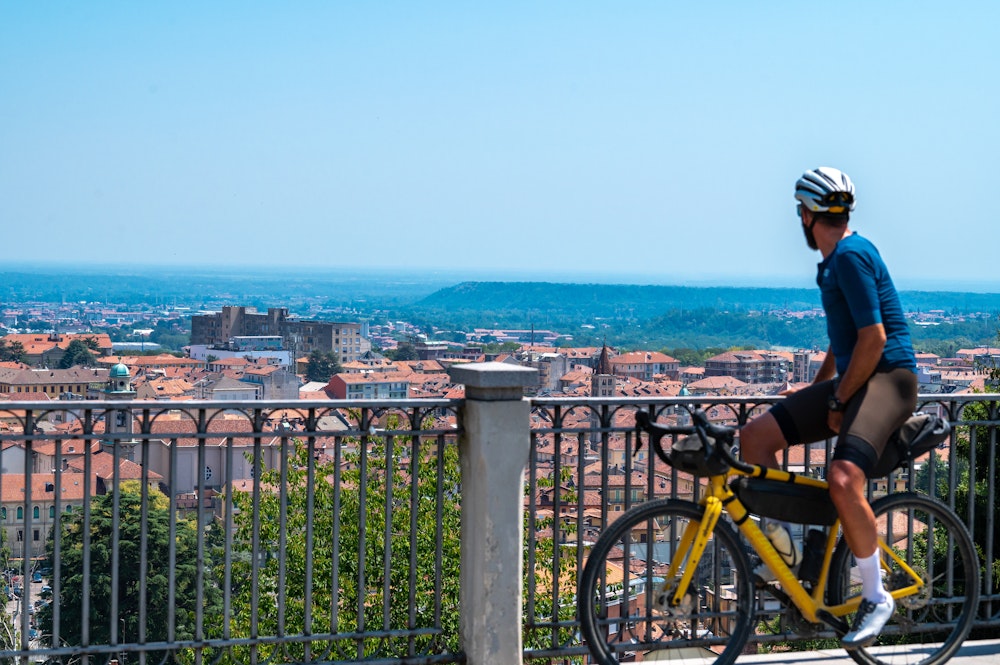
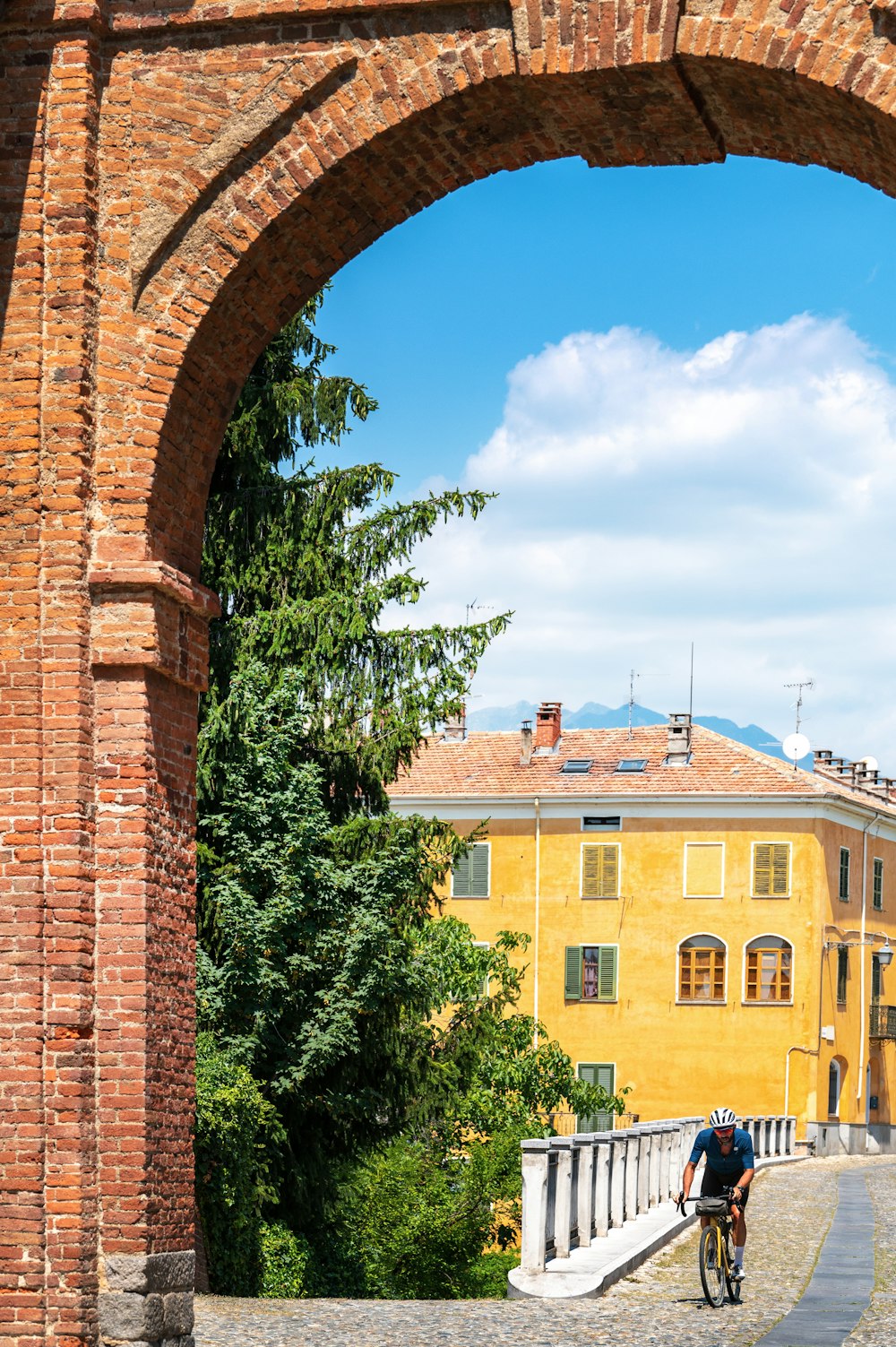
Of course, in order to enjoy everything we’d need stop at almost every place that attracts our curiosity. But our goal is to cover the itinerary in three days, so we have to stay in the saddle and pedal. We ride clockwise through the Cervo valley, following clockwise a heart-shaped track which rises in an arc from Biella towards the mountains. It then descends to the plain of rice paddies and follows another great panoramic arc through the Serra hills to Oropa. It returns to the capital after 210 kilometres and almost 3,000 metres of elevation gain — mostly on gravel roads, paths and even tarmac, but always far from busy roads.
In Biella, we leave following a coffee and a chocolate canestrello in one of the cafés along Via Italia, between porticoes and shops. On the outskirts of the historic centre, we pass by one of the oldest and most famous Italian breweries in the old industrial quarter.
The large factories along the river bear witness to the vicissitudes of Quintino and Vittorio Sella, the Fila, the Cerruti and other families of famous entrepreneurs in the textile industry; now partly transformed into containers for contemporary art and innovation. They are places that weave ingenuity and graft together — between the production, culture and experimentation of a future yet to be invented.
As we travel up the course of the Cervo, large factories on the riverbed continue to mark the landscape: water, earth and looms. We thread our way along the secondary roads that cross the valley on narrow bridges, gracing small hamlets such as Miagliano, Sagliano, Oretto, Sassaia, Campiglia and Rosazza. As we pass through, we catch a glimpse of their original stone architecture.
Marco and Massimo, cyclists and geologists who pedal with me, ride at a fast pace, but in the meantime they tell me about the geological importance of the Biellese. A demarcation line between the tectonic plates of Africa and Europe passes through here, and the the Balma syenite which forms the base of the Statue of Liberty is extracted here. We pass Andorno, the village of Ratafià and Campiglia, where the parish church contains a beautiful polyptych. We stop for a quick swim in one of the amazing natural pools of the Cervo, which continues to accompany us on our way. The water is crystal clear, but very far from thermal.
The route breaks away from the Cervo valley and climbs up to Bocchetto Sessera, before descending to Trivero. It’s a truly spectacular ride, with spectacular vistas across the Po Valley. From Monviso to Turin, then Vercelli and Novara, onto the skyscrapers of Milan beyond the silhouette of Monte Rosa. We rode it at sunset on a summer day, and it was an experience we will hardly forget. But if you return in spring you will never forget the blossoming rhododendrons and daffodils, while in autumn the colours of the foliage will enchant you. Remember for another occasion; the road that leads from the Panoramica into the Sessera valley, towards the Mera alps, through the Boscarola pass. This is a magnificent playground, appreciated by dedicated road cyclists and the most extreme downhill enthusiasts alike.
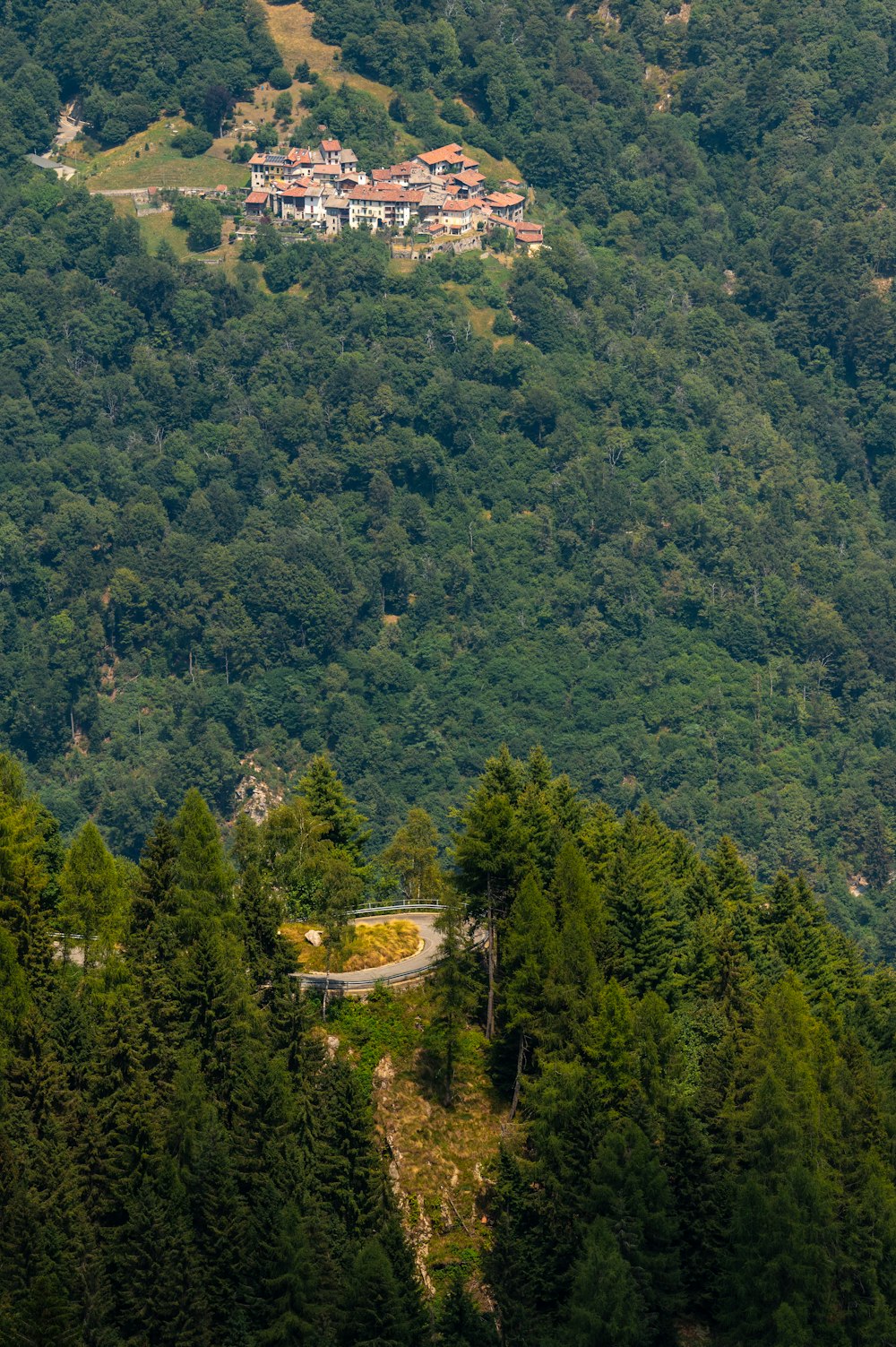
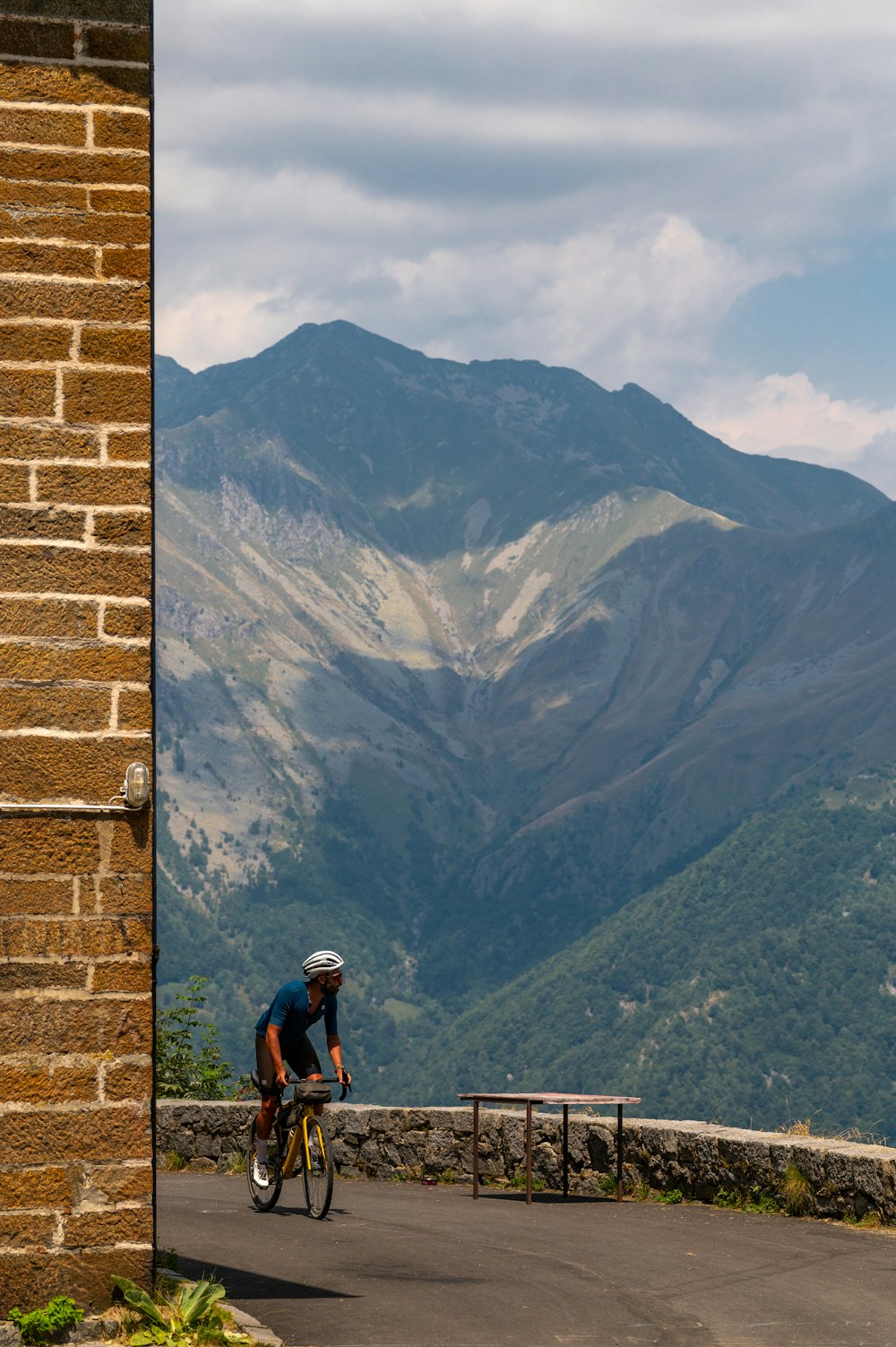
Leaving Bielmonte behind, a long and beautiful descent leads to Trivero. We absorb the surroundings of the Oasi Zegna — commissioned by Ermenegildo Zegna with the help of architects and landscapists such as Luigi Vietti and Pietro Porcinai — still lovingly cared for by the same family of entrepreneurs (Conca dei Rododendri, Centro and Casa Zegna). On one of the last switchbacks, a stop for a good craft beer is a must. It is also easy to find somewhere to sleep, in one of the many hostels and hotels in the oasis. After more than 50 kilometres and 1,500 metres of climbing, we deserve it.
The next day we get back in the saddle and continue our descent towards the plains. We pass through Castagnea and Pray — home to the Fabbrica della Ruota, the factory-museum of the wheel — and the village of Mezzana Mortigliengo, with its open-air museum of contemporary art.
The road meanders between climbs, descents and quieter stretches; we cross a few sections of the Prevostura Gran Fondo, where we occasionally encounter tribes of downhill riders carving up terrain along the many paths of the Rive Rosse.
At Masserano, we take the cobbled streets up the beautiful church of San Teonesto. The village, magnificent in its own right, is a window on the vineyards and hills surrounding Lessona. This is an area of wine-producing excellence; just ask the writer Mario Soldati. He was so enthused by the area that he wrote about it extensively and beautifully in his book Vino al vino (Wine to Wine). There’s still much to be discovered, but two wines in particular, Lessona and Bramaterra, are simply amazing.
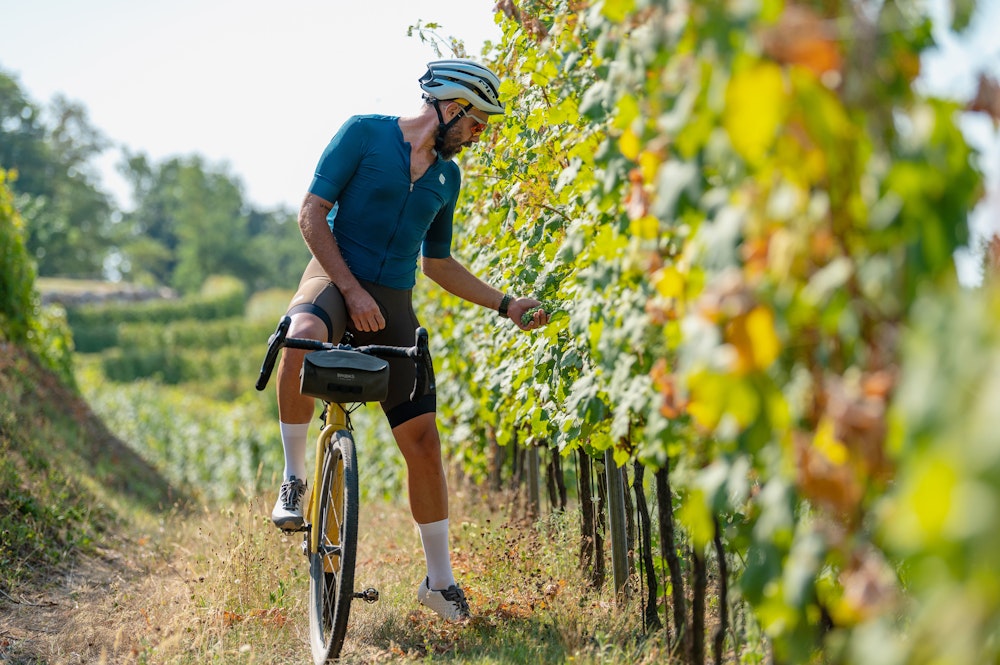
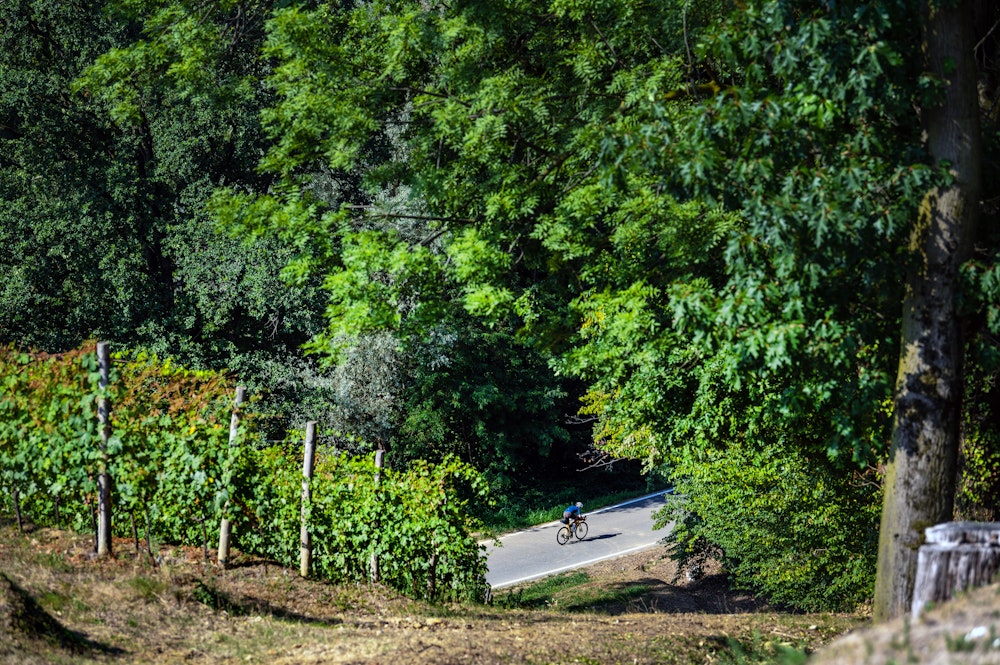
We then push on to one of the most hidden and surprising places of our journey: the scenic, sandy banks just downstream of the confluence with the Strona river. It is just over a kilometre on a precarious single track suspended above a spectacular canyon, carved deep into the river. A word of advice: avoid crossing it in heavy rain.
Having forded the river near Castelletto Cervo, the route continues its slalom through fields, farmsteads and churches. Between Mottalciata and Castellengo lies the SS Pietro e Paolo church, worth a visit for the magnificence of its frescoes. Castellengo Castle marks the boundary between the valley and the hills, and is rightly famed for both its wine and its hospitality.
A few switchbacks before ascending to another stunning environment, that of the large river terrace of Baraggia. It’s a vast plateau of clay soil, suspended between the Cervo and Elvo rivers and completely uninhabited — characterised by wide meadow glades often covered with heather, and sparse woods of birch and oak. Until not so many years ago, the southern part was inaccessible and reserved for military exercises, but today it is closed for only a few days a year.
We ride it for 18 entirely flat kilometres, on dirt roads and single tracks. In truth they’re worth the trip in their own right, offering wide-open horizons and magnificent views of the mountains. Here too you might have to watch out for mud and puddles, but no matter. You can ride here all-year-round, even on the coldest days of winter. We get there when the afternoon shadows linger on the terrace, suspended almost 100 metres above the bed of the Cervo torrent. Reaching a large oak, we stop briefly. The view is immensely satisfying, embracing as it does the entire eastern Biellese.
From here you can return to Biella by following the terrace of the Cervo river, and visit the village and the Ricetto di Candelo — an opportunity for those who only have two days spare. But we point the handlebars southwards, and amidst open spaces and sparse birch woods, we arrive at Masazza after about ten kilometres, finding the plain again. We resume travelling among farmsteads, pedalling through long stretches that cross the rice fields that envelop the southern part of our route.
We arrive at Salussola, a railway station along the Santhia-Biella line. There we cross the Elvo, the second watercourse marking the landscape of the Biellese, and resume our gentle climb towards Cerrione. We allow our minds to wander towards the mountains between Mombarone di Ivrea and the Sanctuary of Oropa. We’ll be crossing them during the final section, but we’ll stop in these parts for the night. We’ve ridden another 70 kilometres, much of it on gravel, and gained over 1000 vertical metres.
Back in the saddle, we ride at altitude towards the Bessa Natural Reserve. Here there were once gold mines, exploited since the Roman era. They have left their mark — large piles of stones and scarred rock faces scatter the landscape. Along single track paths and small dirt roads, protected from the heat by the shade of the forest, we skirt the villages between Sala, Zubiena and Magnano.
Those who want to rest here can treat themselves to a double stop. For the (non-calorie conscious) body we have the calorific torcetti della serra; and for the soul, by visiting the ricetto and the church of San Secondo in Magnano, at the Bose monastic community.
We’re riding up the long moraine cordon of the Serra. Paolo insists that we ride it all the way to Andrate, where the slopes of Mombarone begin and the watershed between Biella and Valle d’Aosta rises above 2,000 metres. Geography is not up for discussion: it is not enough merely to describe it in words or perceive it on maps. It must also be conquered with effort and by “incorporating the landscape” to fix it in our memory. This is why we try to stay right on the edge of the ridge, with the intention of tracing it along the profile of the Serra, the straight ridge you see from your car or train window when travelling between Turin and Milan.
Arriving at the top of the Serra in Andrate, we head towards Oropa. We pick up the route of the Panoramica road that Ermenegildo Zegna — the enlightened textile entrepreneur — had imagined as a woollen thread, capable of sewing together the myriad places and identities of the entire territory; nature, the landscape of industry, and the landscape of faith in the many sanctuaries that surround Biella and its mountains.
This stretch of the Panoramica, which everyone here calls Tracciolino, still offers a breathtaking horizon. The 65 kilometres between Andrate and Trivero are extraordinary; a sort of mountain balcony overlooking the plain from a constant 1000 metres. Born almost 100 years ago, the present-day Panoramica Zegna is an innovative proposal for sustainable tourism. This is a landscape ideal for experimenting, and for finding a new balance between work, leisure and well-being.
Following a brief but beguiling stop at the Trappa di Sordevolo, we finally arrive at Oropa after almost 200 kilometres and 4,000 metres of climbing.

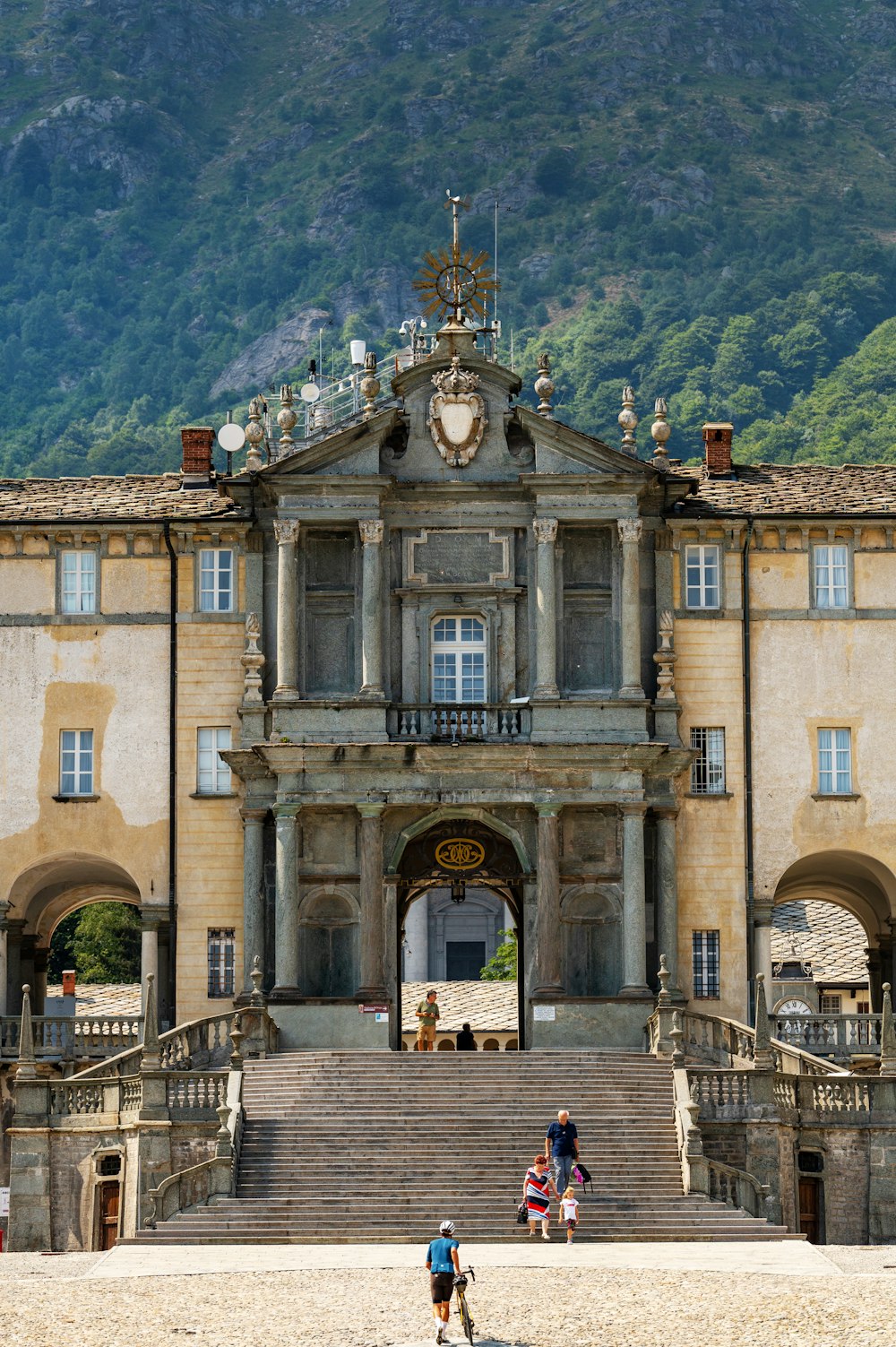
To close our loop, we descend along the route of the disused tramway to Biella, which we follow as far as Favaro. This route is perfect for gravel bikes, one that seems to take place in a model train set: stone bridges, a helical curve and even a tunnel. From Favaro we change course and head for the park on the Burcina hill at lovely Pollone. It’s great, riding these dirt roads in the summer, but nicer still in the autumn. Best of all, though, is May. Then the rhododendrons are in bloom, and it’s a real treat.
A few more bends and we arrive in Biella, passing through the mediaeval village of Piazzo, with its ancient buildings and a final cobbled road that takes us to the Piano, opposite the church of San Sebastiano.
Our finish line is the Zumaglini gardens. My advice here? Ice-cream! Italians usually mix and match their flavours, but here I’d recommend simple, delicious crema. Try other flavours if you must, but it’s irrefutably the best. It’s divine.
This area, the space between Milan Turin, is often referred to as “central park”. That’s as maybe, but given its heritage we like to think of our journey as a fine woollen thread. From the Biellese flatlands, through the hills and mountains, and back once more to the plains, we’ve stitched together some of its landscapes. So a thread or, if you will, a heart-shaped necklace.
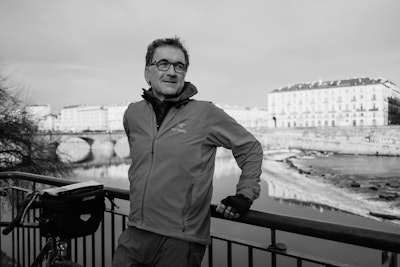
Texts
Andrea Rolando
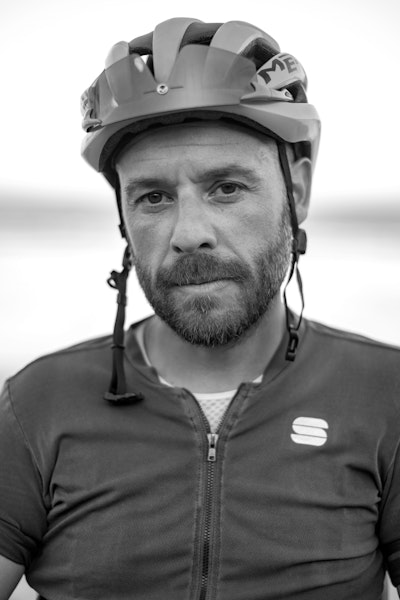
Photos
Paolo Penni Martelli
Cycled with us
Stefano Francescutti
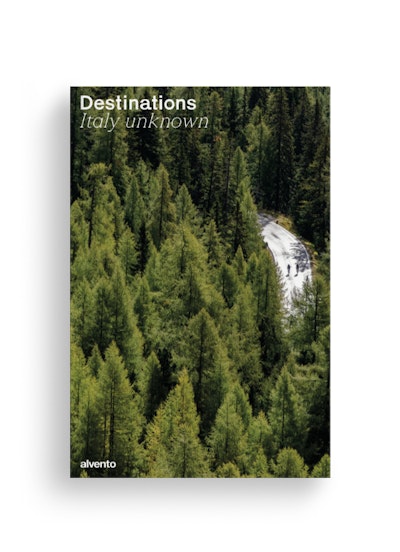
Questo itinerario lo puoi trovare sul super-magazine Destinations – Italy unknown / 1, lo speciale di alvento dedicato al bikepacking. 13 destinazioni poco battute o reinterpretazioni di mete ciclistiche famose.
